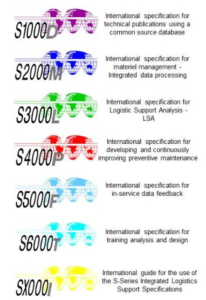
How Shipdex has become the protocol for the maritime industry:
its aerospace and defence origins
The origins of Shipdex can be traced back to Marco Vatteroni, the author of the Shipdex Protocol, during his tenure at Fincantieri-Naval Department, the renowned Italian Shipyard, starting in the early 2000s. It was during this time that it was recognized a need for standardization in the exchange of technical documentation within the military and civil maritime industry. At that time and still to this day, shipping companies and shipbuilders are facing the challenge of receiving technical manuals from manufacturers in various formats, structures, and inconsistent data quality.
To address this issue, the primary objective of the Shipdex Protocol was to replace traditional technical manuals, which were supplied in paper or various formats, with advanced, structured, electronic, and standardized manuals.
In present times, many shipping companies utilize Computerized Maintenance Management Systems (CMMS) and Enterprise Resource Planning (ERP) software applications to efficiently manage and optimize maintenance and material procurement processes. However, there is still a missing link: the Shipdex Protocol. Having such a protocol is crucial to ensure seamless communication through a common electronic “language.”
The Shipdex Protocol aims to bridge this gap by providing a standardized protocol for exchanging technical documentation, thereby enhancing the effectiveness and efficiency of information flow within the maritime industry (shipbuilders, shipowners and manufacturers, authorities etc.).
“My perception that aerospace and defence S1000D standard could be the best ‘tool’ to produce technical manuals in a well-structured electronic format compatible with different IT systems, came to me, while working with technical manuals for some Navies” says Marco Vatteroni, Shipdex technical manager. “I then started to dig into the aerospace standards developed and sponsored by ASD, AIA and ATA e-business program”. 
Gabriele Traversi, Chair of Italian S1000D National Working Group and Industry Representative for Italy in the S1000D Steering Committee, is convinced that: “S1000D is the most efficient international specification for the procurement and production of technical publications. It helps standardize data across product manufacturers and programs to facilitate improved maintenance and logistics. S1000D makes data reuse easier and more efficient. It offers advanced control over the documentation process, configuration control and data interoperability, as well as greater accessibility and usability of technical information from the user’s perspective, significantly increasing the quality of technical documentation without compromising the data integrity”.
Over the years the Shipdex protocol was implemented and it is now composed of the following 2 specification.
- Shipdex-D for technical documentation (based on S1000D)
- Shipdex-F for in-service data feedback (based on S5000F)
The figure shows the Integrated Product Support (IPS) S-series that gave the origin to Shipdex-D and Shipdex-F
Ramón Somoza, S5000F chairman and Senior Expert for In-Service Data Feedback at Airbus has always supported the uptake of the standard in the aerospace and defence sector because he says: “S5000F is likely to become a game-changer, as the first global in-service data feedback specification”. He considers that its use for aircraft, helicopters, UAVs, even submarines and other ships, both in military and civilian programs, is a testimony of its flexibility and strength. “The Shipdex contribution to this specification” he says, “ensured that it can be also used in the commercial shipping industry”
Shipdex, as an International organization, was established with the support of prominent manufacturers and ship-owners, taking inspiration from the practices of the aerospace and defence industry. The reasons behind developing a common and standardized data exchange protocol were the need for automated databases generation. This need remains relevant today and continues to grow due to different applications, the need to optimize maintenance and procurement processes, and the increasing need to enhance environmental performance and safety in the commercial shipping industry.
The adaptation from the aerospace and defence industry was essential to simplify and make the protocol more affordable for the commercial shipping sector. Shipdex combines the most effective aspects of protocol developments in those industries with the most suitable solutions for the maritime industry.
If now Shipdex can disconnect from the complexities and costs associated with its aerospace and defence origins while is achieving the above objectives, that is a significant accomplishment. However, it is important not to overlook the reason behind its origins and to draw inspiration from the successful implementation of similar protocols in the aerospace and defence industries. These implementations serve as a booster to the benefits of adopting Shipdex protocols in the maritime industry.


